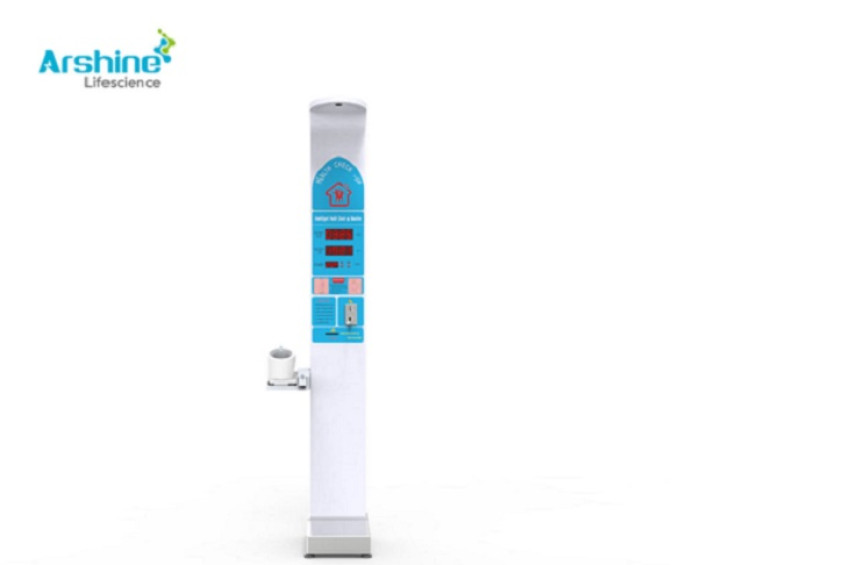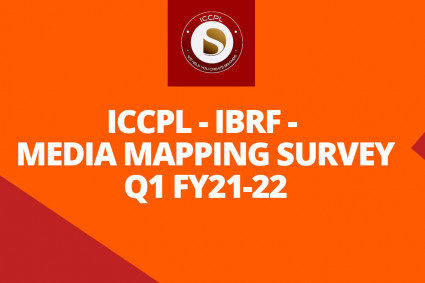
The Body Health Check-Up Equipment, also known as a medical diagnostic device or medical examination equipment, encompasses a wide range of instruments and technologies used in the assessment and evaluation of an individual's Body Health. These machines serve various purposes, from measuring vital signs to diagnosing medical conditions and monitoring overall health. In this article, we will explore the functions and applications of the Body Health Check-Up Equipment, providing a comprehensive overview of its capabilities and importance in healthcare.
Measurement of Vital Signs: One of the primary functions of a Body Health Check-Up Equipment is to measure vital signs, which include blood pressure, heart rate, respiratory rate, and body temperature. These measurements provide essential information about a person's overall health status and help healthcare professionals assess various physiological parameters. The machine typically includes devices such as a blood pressure monitor, pulse oximeter, thermometer, and stethoscope to accurately measure and record vital signs.
Blood Pressure Monitor: This device measures the force exerted by blood against the walls of arteries during circulation. It consists of an inflatable cuff, a pressure gauge, and a display screen. Blood pressure measurements help diagnose hypertension (high blood pressure) or hypotension (low blood pressure) and monitor cardiovascular health.
Pulse Oximeter: This device measures the oxygen saturation level in the blood, as well as the heart rate. It is commonly placed on a finger or earlobe, utilizing light absorption to estimate oxygen levels. Pulse oximetry is crucial in monitoring respiratory function and assessing conditions such as hypoxemia (low blood oxygen levels) or hypoxia (insufficient tissue oxygenation).
Thermometer: A thermometer is used to measure body temperature. Different types of thermometers are available, including oral, axillary (under the armpit), tympanic (ear), and temporal artery thermometers. Accurate temperature measurement is essential in diagnosing and monitoring fevers and infections.
Diagnostic Imaging: Body Health Check-Up Equipment encompass various diagnostic imaging technologies that allow healthcare professionals to visualize internal structures and detect abnormalities. These imaging techniques provide crucial information for diagnosis, treatment planning, and monitoring of conditions. Some commonly used diagnostic imaging technologies include:
X-ray Machine: X-ray machines produce images of the body's internal structures using low-dose radiation. X-rays are commonly used to examine bones, lungs, and the chest, aiding in the diagnosis of fractures, pneumonia, and other conditions.
Ultrasound Machine: Ultrasound technology utilizes high-frequency sound waves to produce real-time images of organs, tissues, and blood flow. It is non-invasive and commonly used in obstetrics for monitoring fetal development, as well as in diagnosing conditions related to the abdomen, pelvis, and cardiovascular system.
Computed Tomography (CT) Scanner: CT scanners combine X-ray technology with computer processing to create detailed cross-sectional images of the body. CT scans provide detailed information about organs, blood vessels, and tissues and are commonly used for diagnosing conditions such as tumors, injuries, and cardiovascular disease.
Magnetic Resonance Imaging (MRI) Machine: MRI machines use strong magnetic fields and radio waves to generate detailed images of organs, soft tissues, and the musculoskeletal system. MRI scans are particularly useful for detecting abnormalities in the brain, spinal cord, joints, and soft tissues.
Positron Emission Tomography (PET) Scanner: PET scanners use a small amount of radioactive material to produce images that show how organs and tissues function at a cellular level. PET scans are commonly used in oncology to detect cancerous cells, evaluate treatment response, and assess the spread of tumors.
Electrocardiography (ECG/EKG): Electrocardiography is a non-invasive technique used to assess the electrical activity of the heart. An ECG machine records the electrical impulses generated by the heart, producing a visual representation known as an electrocardiogram. ECGs provide valuable information about heart rhythm, rate, and the presence of any abnormalities or cardiac conditions. They are routinely used in diagnosing and monitoring conditions such as arrhythmias, heart attacks, and heart disease.
Pulmonary Function Testing: Body Health Check-Up Equipment also include tools for assessing lung function and respiratory health. These tests measure various parameters, such as lung capacity, airflow, and oxygen exchange, providing valuable information for diagnosing and managing respiratory conditions. Some common pulmonary function tests include:
Spirometer: A spirometer is a device used to measure lung function, specifically lung capacity and airflow. By analyzing the volume and flow of inhaled and exhaled air, spirometry helps diagnose and monitor conditions such as asthma, chronic obstructive pulmonary disease (COPD), and pulmonary fibrosis.
Peak Flow Meter: A peak flow meter is a handheld device that measures the maximum speed at which a person can exhale air forcefully. It is commonly used to monitor asthma and assess the severity of an asthma attack.
Laboratory Analysis: Body Health Check-Up Equipment often include devices for conducting laboratory analyses of various bodily fluids, such as blood, urine, and saliva. These tests provide valuable information about a person's overall health status, detect the presence of specific markers or substances, and aid in the diagnosis and monitoring of various medical conditions. Common laboratory analysis machines include:
Hematology Analyzer: Hematology analyzers are used to analyze blood samples, providing information about red and white blood cell counts, hemoglobin levels, platelet counts, and other parameters. These tests help diagnose conditions such as anemia, infections, and blood disorders.
Biochemical Analyzer: Biochemical analyzers are used to measure the concentration of various substances, such as glucose, cholesterol, liver enzymes, and electrolytes, in blood or urine samples. These tests aid in the diagnosis and management of conditions such as diabetes, liver disease, and kidney dysfunction.
Urine Analyzer: Urine analyzers are used to assess the chemical and physical properties of urine samples. They can detect the presence of abnormal substances, such as glucose, protein, or blood, which may indicate conditions such as urinary tract infections, kidney disease, or diabetes.
Monitoring Devices: Body Health Check-Up Equipment also encompass various monitoring devices used to assess and track specific health parameters over time. These devices help monitor conditions, evaluate treatment efficacy, and detect any changes or abnormalities. Some commonly used monitoring devices include:
Holter Monitor: A Holter monitor is a portable device used to record a person's heart rhythm continuously over a period of 24 to 48 hours. It is commonly used to detect and analyze abnormal heart rhythms, assess symptoms such as palpitations or dizziness, and evaluate the effectiveness of cardiac medications or interventions.
Continuous Glucose Monitor (CGM): CGMs are devices used by individuals with diabetes to monitor their blood glucose levels continuously. These devices provide real-time data and alerts to help manage blood sugar levels and make informed decisions regarding insulin dosing and dietary choices.
Sleep Study Equipment: Sleep study equipment, such as polysomnography machines, are used to monitor sleep patterns, brain activity, breathing, and oxygen levels during sleep. These devices aid in diagnosing sleep disorders such as sleep apnea, narcolepsy, and insomnia.
Miscellaneous Examination Equipment: Body Health Check-Up Equipment encompass several additional tools and devices that aid in the assessment and examination of specific areas or systems of the body. Some examples include:
Ophthalmoscope and Otoscope: These handheld devices allow healthcare professionals to examine the inner structures of the eye (ophthalmoscope) and the ear canal (otoscope). They are used to assess visual acuity, detect eye conditions, and diagnose ear infections or abnormalities.
Dermatoscope: A dermatoscope is a handheld device used to examine the skin more closely. It allows healthcare professionals to visualize skin lesions, moles, or other skin abnormalities, aiding in the early detection of skin cancer or dermatological conditions.
Stethoscope: A stethoscope is a familiar tool used by healthcare professionals to listen to internal sounds of the body, such as heart sounds, lung sounds, and bowel sounds. It helps in diagnosing cardiac and respiratory conditions and assessing overall organ function.
In conclusion, the Body Health Check-Up Equipment encompasses a wide range of instruments and technologies that play a vital role in assessing, diagnosing, and monitoring an individual's Body Health. From measuring vital signs to conducting diagnostic imaging, performing laboratory analyses, and monitoring specific parameters, these machines provide valuable information for healthcare professionals to make informed decisions regarding treatment, management, and overall patient care. By utilizing these tools effectively, healthcare providers can detect abnormalities, monitor progress, and promote optimal health and well-being for individuals of all ages.
https://www.arshinemedical.com/Industry-information/the-functions-and-functions-of-the-body-health-check-up-equipment





